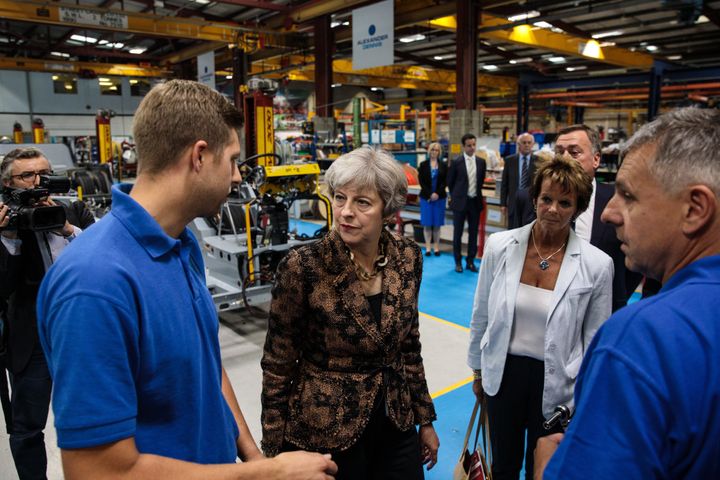
We may soon find out a bit more about what Brexit will mean for you, your job and your community.
Under duress, the government has provided a sector-specific impact assessment paper to the Brexit select committee. Even if redacted, it must deliver on the right every worker has to know how their sector of the economy will be affected by Brexit. This is what the paper needs to tell us.
Will the impact assessments cover all the options for our future relationship with the EU?
The government has ruled out options such as staying in the customs union and single market, preferring a bilateral free-trade deal. The TUC thinks that was a bad call.
The public should get to see the impact assessments for both options, as well as for a ‘no deal’ Brexit. Working people and businesses have a right to know what the costs and benefits of each approach are, and which of these options might come with the biggest risks.
Will the impact assessments cover the full costs to business?
At the very least, we need to see for each sector how the direct cost of exports to the rest of Europe would change if there were tariffs on UK goods. And import tariffs are important too – many finished goods produced in the UK include imported components.
Non-tariff costs must also be included, especially for the service sectors which make up 80% of our economy. And we need to know what impact the different options would have on manufacturers – will they have to meet different standards at home to those in their key export markets? What would be the impact of setting up new certification authorities? What would be the costs to business of the checks needed when goods and services are traded with countries with different standards?
Will the impact assessments cover broader economic costs?
Many economists have expressed concern that Britain will be less attractive to international investors if we do not provide direct access to the European single market. The impact assessments must tell how investment could be affected for each of the options.
A common feature of many Brexit options being discussed is a reduction in the number of EU migrant workers that could come to the UK. Some sectors – both public and private – rely heavily on EU workers. For example, 10% of NHS doctors are EU migrants, and the UK construction industry currently employs around 176,000 EU migrant workers.
Losing access to those workers could mean considerable recruitment and training costs, for both business and government. And it could mean significant loss of productivity – costing businesses, public services, and revenue to the Exchequer – until new workers are recruited and gain experience, and skills shortages are properly plugged. And that could take many years.
Will the impact assessments cover human costs?
Workplace safety has been driven by the EU. So we must know what any changes to regulatory standards mean for the health and safety of workers in each of those industries. And we must know what the different options could mean for people’s workplace and consumer rights.
It’s not new for governments to look at the wider human costs of their policies. For example, when the government published its impact assessment for Universal Credit, it stated that: “The overall increase in employment would lead to direct economic value, as well as having a positive impact on health impacts and crime levels”. While we don’t expect the sector impact assessments to tell us the effect of Brexit on crime, it’s a good reminder that government is capable of looking at the broader impacts of major policy changes on people’s everyday lives.
Will the impact assessments cover equality?
The impact assessments need to address the impact on equality, sector by sector, so we can know if certain groups be more at risk than others from economic impacts or loss of rights and protections. When government introduces new legislation, it must produce an equality impact assessment. We need it for leaving the EU too, so we can know if certain groups be more at risk than others from economic impacts or loss of rights and protections.
EU laws covering part-time workers, for instance, affect women far more than men because most part-time workers are women. And part-time working differs hugely by sector. Most women tend to work in service sectors for instance, like care.
Will the impact assessments consider how the UK’s regions and nations will be affected?
The UK economy suffers from strong regional imbalances. The impact of leaving the EU could be very different depending on where you live. Jobs in the finance sector are concentrated in London and the south east. The chemical industry is heavily represented in the north east. Wales is far more dependent on trade with the rest of Europe than the UK average.
For too long, the debate about Brexit has been done on the basis of facts and figures averaged across the whole of the UK. But people need to know how the various options for leaving the EU will affect their immediate geographic area, their regional economy and the communities where they live.
The government’s impact assessments, even heavily redacted as they are, should help us answer these six questions. And if they don’t, then the government has more work to do in establishing the impact of each Brexit option – and giving the British people the information they need to understand the choices before us as a country.
Frances O’Grady is the General Secretary of the TUC
